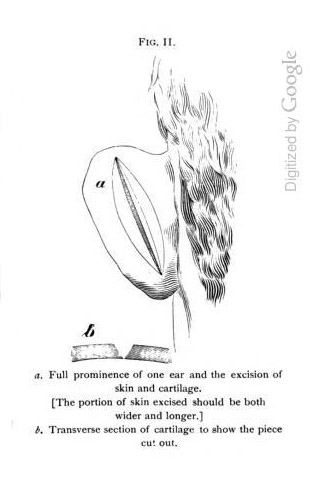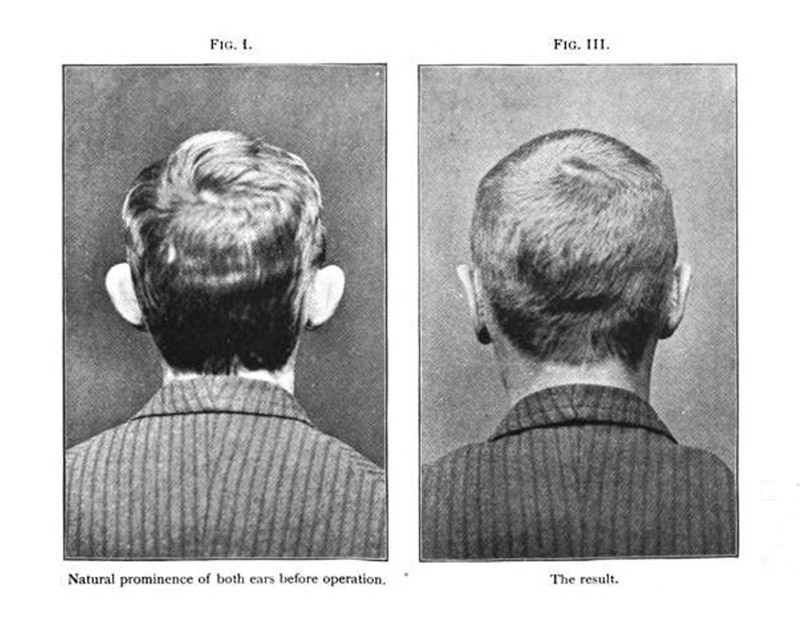

Journal : Proceedings of the Philadelphia County Medical Society, ; vol. x.
Philadelphia : W. J. Dornan, 1889.
Description : pp. 256-257, [1 pl.] ; ill.: 2 photo., 1 fig. ; 22 cm.
Photograph : 2 half-tones.
Subject : Ear — Plastic surgery.
Notes :
A. B., aged nineteen, was kindly sent to me by Drs. Girvin and Musser in February, 1889. Fig. 1, from a photograph, shows clearly the deformity. For obvious reasons it was taken from behind, so as not to show his face. A front view would show the auricles even more conspicuously. The operation that I decided upon for relief was done as follows: As shown in Fig. 2, the oval dotted line represents the portion of the skin that was removed from the posterior surface of the auricle, the cartilage being laid bare by its dissection. In the long axis of the oval excision of the skin a long, narrow piece was removed from the cartilage itself, V-shaped on cross section like the furrow of a plough. Great care was taken not to cut through the skin on the anterior surface of the ear. On the left side three catgut stitches were introduced in the cartilage itself in addition to those in the skin. On the right side reliance was placed entirely on the sutures of the skin. The result was equally satisfactory on the two sides. The two operations were done at the same time. They were attended with very free bleeding, which, however, was easily controlled. The wound was dressed antiseptically, of course. The patient was out of bed the next day. He was not at all sick from the operation. The stitches were purposely not removed until the tenth day. The result is shown in Fig 3.
REMARKS. — When I decided to operate I was not aware that any one had preceded me in the matter, but I have since found in the Archives of Otology, New York, 1881, vol. x. p. 97, a description of a case by the late Dr. E. T. Ely, in which he successfully remedied a similar deformity. I would, however, decidedly give the preference to the method which I adopted, for this reason : Ely removed an oval piece comprising nearly the entire length of the auricle and through its entire thickness, thus including the skin on its anterior surface. This, of course, involved a scar which would always be visible from in front. The plan which I advise produces no scar in front, as the skin is left intact. I believe it to be always needful, however, to remove a wedge-shaped piece from the cartilage itself, as well as a generous oval piece from the skin. If the skin alone is removed, the natural elasticity of the cartilage would stretch the skin in time and probably reproduce the deformity.
The result in this case was perfectly satisfactory, the only scar being the linear one on the back of each auricle, which was only visible by standing back of him and looking carefully for it.


